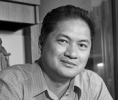The role of election surveys
- Details
- Blog Content
- Hits: 2936
The earliest known opinion poll was conducted in Pennsylvania in 1824 when a local straw poll predicted the victory of Andrew Jackson against Quincy Adams. Since then, poll surveys have gradually become popular, with people developing more scientific techniques and more extensive topical, demographic and territorial coverage. Political surveys correctly predicted, within a few percentage points in the popular vote, the outcomes of most US presidential elections.
The Gallup Polls was the first polling organization in the US to accurately anticipate presidential election results and the margin of victory for the winning candidate. This is not to say, however, that pre-election polls never miss their targets. In the US, polls also missed a number of closely contested elections in 1948, 1976, 2004, and the popular vote in 2000. Still, these misses do not in themselves show that the business of forecasting is intrinsically unreliable. For one, close elections are innately hard to predict because the best possible forecast will be statistically indistinguishable from 50 per cent. The 2000 presidential contest between George W. Bush and Al Gore in particular was especially difficult. Most pollsters predicted that the election was too close to call. The outcome in fact validated this when it was decided by .5 percent of the popular vote. Al Gore won the popular vote, but George W. Bush became the president when he was awarded Florida’s 25 electoral votes on December 12 by the U.S. Supreme Court. The occurrence of statistical insignificance is not the only factor that contributes to the difficulty of political forecasting. Other variables which are hard to quantify may also affect voters’ perceptions and voting behavior. Thus, verbal slips, debates, rhetorical victories, favorable and unfavorable media coverage can also make a difference.
Among the various survey practitioners in our country, the Social Weather Stations (SWS) is the pioneer (disclosure: I am an SWS fellow and a member of its board). Founded in 1985, the SWS, a private, independent, non-partisan, non-profit scientific institute in the Philippines which conducts social surveys and does survey-based social science research to promote the broad quality of life of the greater number of the Filipino people in the context of a free democratic society.
Among SWS’ accomplishments are its fairly accurate predictions on the results of certain presidential elections including the narrow victory of President Fidel Ramos in 1992, the easy victory of President Joseph Estrada in 1998, and the (separate) Vice-Presidential wins of Estrada in 1992 and Gloria Macapagal-Arroyo in 1998. The SWS also has an excellent batting average as regards senatorial elections where the 12 candidates with the most votes win have also turned out accurate. In the recently concluded 2013 senatorial elections, the SWS once again correctly pre-identified the winners and losers. In the final pre-election survey of May 2-3, 2013, SWS came out with 9 Team PNoy, 3 UNA in top 12; 7 Team PNoy, 2 UNA safe,” announced on May 8 which proved entirely correct, compared to the actual results, official or unofficial.
Voters’ preferences can also be affected by current events that occur during the campaign period, including the candidate’s response to a particular event, whether or not campaign-related. The advent of “tracking polls” enables the pollster to measure the impact of events and the candidate’s responses to these events as soon as they occurred. Although it has not gained currency in the Philippines, “tracking polls” have also become a staple in US elections. “Tracking polls” record the candidates’ survey standing on a daily basis, the objective being to endeavor to reflect the dynamics of the electorate’s response to campaign events. Here, we conduct periodic surveys, i.e. surveys that measure voter’s preferences in a given period of time rather than on a daily basis.
Concededly, the polling business will always remain within the realm of inexact science. Some may call it “soft science” simply because its principal subject, the “human being”, is a most complex and unpredictable creature whose views, opinions and preferences are influenced by a multitude of controlled and uncontrolled internal and external factors. Although by nature poll surveys fall under the soft sciences where it may be difficult to establish strictly measurable criteria, by using scientific methods “true figures” can still be anticipated with reasonable certainty. That is why a “margin of error” is set to give some room for, as the term denotes, some discrepancies between the poll results and the actual results. This is also why as Dr. Mahar Mangahas, SWS founder, has consistently said the elections validate the surveys and not the other way around.
Deviations between the pre-election surveys and poll results aside, there is a growing consensus that poll surveys can forecast outcome of elections reasonably well on the basis of fundamental variables measured before the campaign. Despite some misgivings aired by some social scientists on their desirability, poll surveys have gained wide acceptance over the years and will remain so in the foreseeable future. And in the Philippines, we can safely assume surveys are for keeps.
 EAGLE EYES is Dean Tony La Viña's column in Manila Standard Today. Follow him on Facebook: This email address is being protected from spambots. You need JavaScript enabled to view it. and Twitter: @tonylavs.
EAGLE EYES is Dean Tony La Viña's column in Manila Standard Today. Follow him on Facebook: This email address is being protected from spambots. You need JavaScript enabled to view it. and Twitter: @tonylavs.

